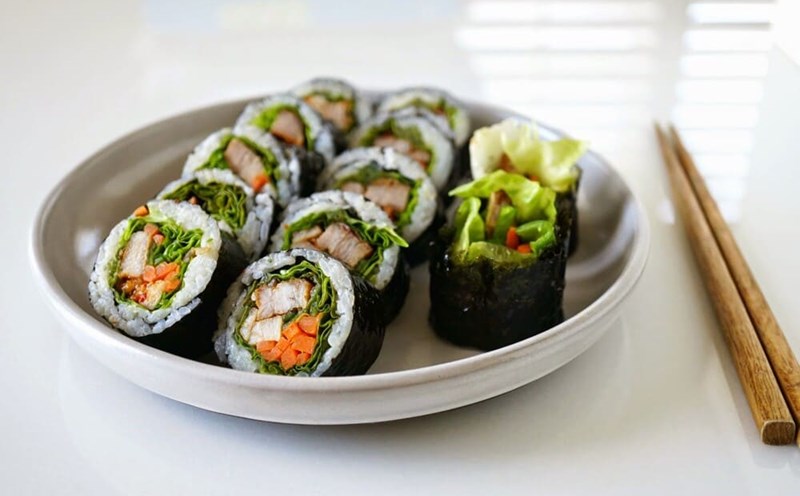Kimbap ( seaweed rolls) is one of the outstanding and very popular dishes of Korean cuisine. In particular, the vegetable kimbap version is a variation that helps cool down the body because of its lightness and nutrition.
Housewives can refer to the kimbap making method below, which is both quick and delicious to treat the whole family to enjoy on the weekend.
Prepare ingredients including 300gr of round-seed sticky rice; 3 - 4 needle leaves; 1 tablespoon sesame oil; 2 - 3 eggs; 1 carrots; 1 cucumber; 200gr bunch of spinach; 3 - 4 bars of yellow salted radish and some other basic spices.
Wash the carrots and cucumbers, peel and slice the noodles. Wash the spinach, blanch it in boiling water, then remove and steep in a bowl of cold water, then rinse the water and mix with a little sesame oil. Blend 2 - 3 eggs with a little spices, spread thinly and then slice the long strands.
Place a seaweed on a bamboo frame. Grind a sufficient amount of rice and arrange it in a thin layer on the surface, leaving a gap of about 2 - 3cm at the top edge.
Arrange the processed ingredients ( carrot, cucumber, eggs, pickled radish, spinach) in a neat row at the bottom of the rice layer.
Start rolling from the bottom up, use your hands to hold the filling tightly, slowly lift the edge of the bamboo tray and roll it back. Tighten the roll and tighten your hands to make the kimbap roll sturdy. roll the rice to the end, use a few grains of rice on the edge of the remaining seaweed to create a glue.
After coiling, apply a thin layer of sesame oil to the surface of the kimbap coil to create shine and increase the attractive flavor.
Use a sharp knife, apply a little cooking oil to the blade to prevent sticking and gently cut the kimbap coil into circles about 1.5 - 2cm thick. Enjoy the kimbap as soon as you make it to feel its delicious, refreshing flavor.







